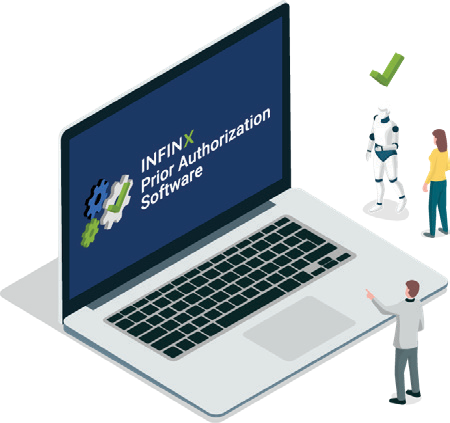White Paper
Alleviating the Prior Authorization Burden in Sleep Medicine
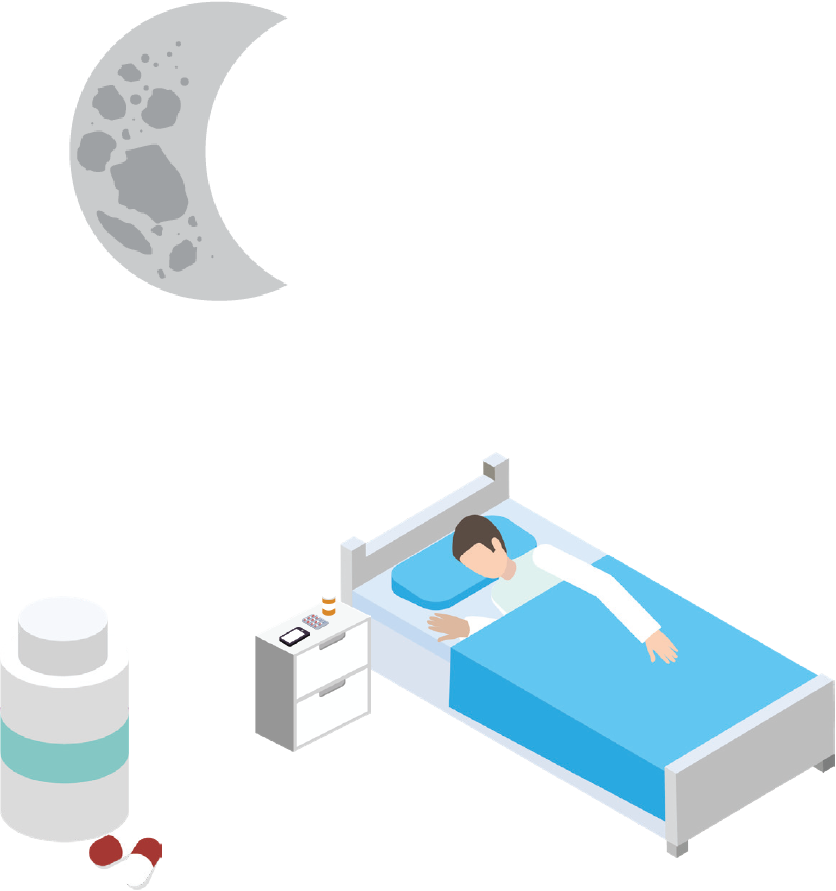
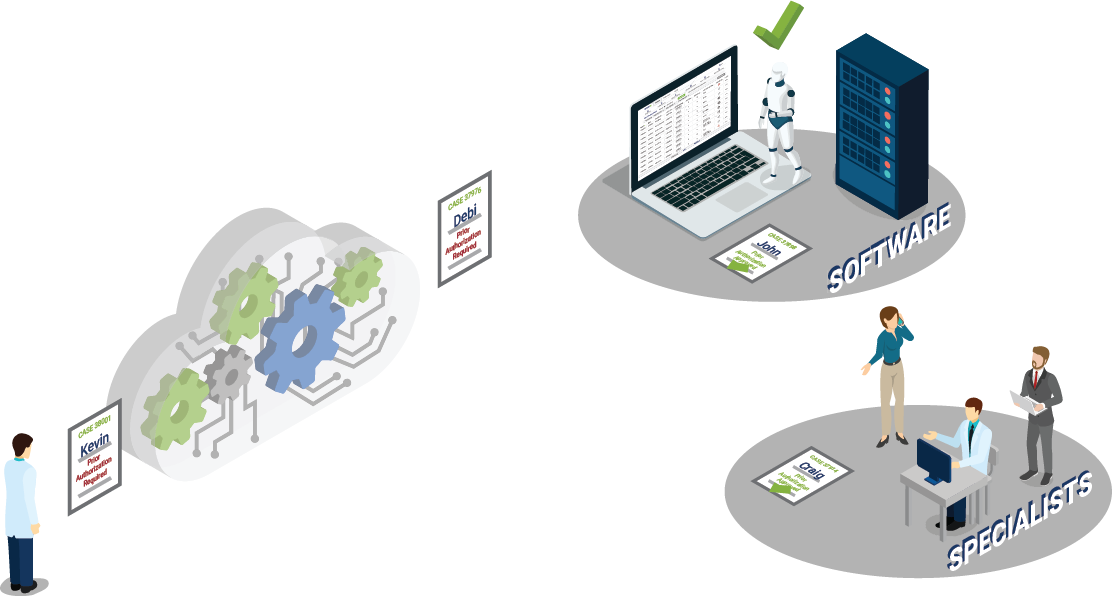
Executive Summary
With the insurance payer industry unrelenting on reducing or streamlining the prior authorization (PA) process, sleep medicine practices continue to struggle with the operational implications of a burdensome and redundant system. With most sleep studies, tests, and medications requiring a PA, practices should consider an advanced automation solution that offers near real-time processing that can be integrated with the EHR/EMR. Using artificial intelligence (AI) and advanced automation, electronic PAs improve patients’ access to care and relieves clinician frustration.
Can Prior Authorizations Be Brought Under Control?

It doesn’t matter if you’ve recently completed your sleep medicine fellowship or have been a board-certified specialist for many years. PA for sleep studies, testing,
procedures, and the associated equipment and medications, are a necessary pain that simply can’t be avoided. While the symptoms of sleep disorders: loud snoring, weight gain, hypertension, trouble concentrating, gasping for breath, are undeniable, insurance payers will require providers to document the medical necessity of treatment before agreeing to reimburse.
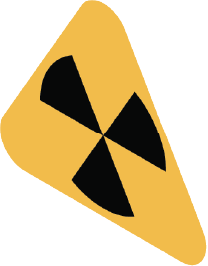
PAs create frustration in sleep medicine in a variety of ways, including:
• Delaying patient care for up to three or more weeks
• Causing a provider to alter their treatment plan for expediency (at-home vs. in-clinic studies)
• Being more susceptible to review and rejection because of insurance company bias
• Being administratively burdensome taking several hours to several weeks to complete
• Negatively impacting the scheduling process and, ultimately, patient care
Recent Calls for Change
The American Academy of Sleep Medicine (AASM) recently responded to the Centers for Medicare and Medicaid Services (CMS) call for input regarding PAs, i stating that they strongly recommended changes that would reduce administrative burdens placed on their membership.
Additionally, the AASM signed onto the American Medical Association (AMA) letterii expressing strong concerns to the House of Representatives Committee reviewing H.R. 3107, the Improving Seniors’ Timely Access to Care Actiii, meant to streamline and standardize the PA process through Medicare.
While the American Healthcare Insurance Plans (AHIP) group has signed on to support all of the initiatives, insurance payers have been clear that PAs are seen as an effective tool that helps contain costs and manage the care delivered, and the industry has seen the use of PAs increase, not decrease. According to the Medical Group Management Association (MGMA), 90% of healthcare leaders report that payer PA requirements are increasing with no end in sight.iv
While there has been growing discord about PAs for several years with major governmental and industryrepresentative bodies joining the chorus, little has changed. Even if foundational improvements are considered, the PA process will likely continue in a new form, but still require clinician and administrative time to manage. Being proactive to facilitate an efficient process seems to be the best solution
Manual Processes Slows Down an Already Cumbersome System
The time involved in processing PAs siphons valuable resources away from where it’s needed. Business staff process redundant paperwork, sit on hold while waiting turns, and faxing or refaxing paperwork all in the hopes of obtaining a quick answer. As documented in the 2019 CAQH Index,v over 87% of healthcare providers use a manual system that is overly burdensome.
Today, PAs are required for many procedures, tests, and medications throughout the healthcare industry — and sleep medicine is no different. In-lab sleep studies, many home studies, and therapeutic medications all need PAs before the provider can treat the patient. By handling the needed PAs manually, it’s estimated that, on average, over two full days of administrative time per provider are required.
3 Ideas to Make the Prior Authorization Process More Effective
Regardless of the industry stakeholder intention, it doesn ’t appear that PAs will go away completely. Instead it’s more likely that insurance companies will reign supreme, and they will continue in some (hopefully) streamlined form.
No matter how frustrating, PAs do seem to help curb healthcare costs. So the question may be how to make them effective for in a sleep medicine pr actice while reducing the administrative burden/costs and improving revenue?
Here are three ways to make the process more functional:
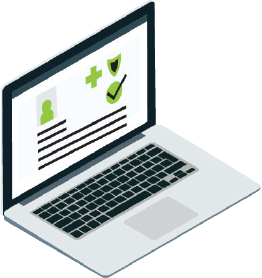
1. Always submit organized, clear documentation — Understanding that insurance payers will likely question any request for in-clinic sleep studies, and expensive equipment and medication, documentation becomes key, including provider clinical notes.
Implement a protocol or EHR/EMR template that ensures comprehensive documentation. Understand and stay ahead of what they are going to request, making sure to complete PAs fully.
Be sure to include medical criteria that insurance payers often ask for, including BMI, neck circumference, history of snoring, and length of symptoms.
Be ready to submit organized, concise, well-articulated appeals with all supporting information. Under the Affordable Care Act, all insurance payers are required to have an appeal process in place. Be sure to ask for a 72-hour expedited or urgent review to speed the process along.
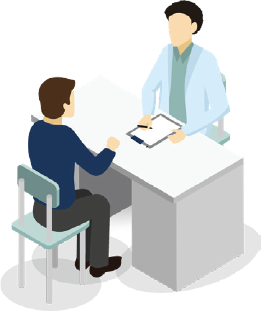
2. Be prepared for clinical review on in-clinic or assisted studies — Most insurance payers will elongate the approval process calling for clinical review or outright reject the request. On the other hand, most insurance payers don’t even require a PA on an athome study signaling their strong desire to funnel patients to that alternative regardless of appropriateness.
Be ready to submit organized, concise, well-articulated appeals with all supporting information. Under the Affordable Care Act, all insurance payers are required to have an appeal process in place. Be sure to ask for a 72-hour expedited or urgent review to speed the process along.

3. Consider an automated electronic PA process — Engaging advanced automation means using AI-driven software that is secure and comprehensive. If integrated with your EHR/EMR system, PA information can be collected, submitted, and followed-up 24/7 in near real-time.
When using an automated PA system, there is a significant oppor tunity to reduce administrative time and costs, and schedule patients much more efficiently. Should an appeal be needed, an automated system would generate and submit the appeal based on pre-defined par ameters with associated documentation.
Improving the Prior Authorizations Process for Sleep Medicine
Using up-to-the-minute advanced automation and AI-driven PA software with machine learning capabilities may be the most beneficial solution.
Cloud-based, automated PA software can be integrated bi-directionally with the sleep medicine pr actice’s EHR/EMR and the billing system being used for client management. A s soon as the patient’s order is entered, tests or medications requiring PAs can be identified, provider/facility details, patient demographics, and test/diagnosis information collected, and an approval request submitted to the insurance payer portal electronically.
Electronic PAs would continually access clearinghouses storing thousands of insurance payer groups and plans, each with their unique guidelines and requirements and electr onically determine the PA parameters for routing the request. PA approvals that once took several days or weeks can now be accomplished in seconds with a 98+% accuracy rate.
Let’s take a focused look at the positive impact automated PAs have in sleep medicine:
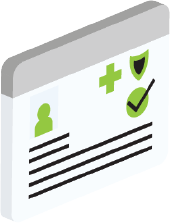
• Initial Processing — From the moment patient information is entered into the EHR/EMR system; guided processes monitor key identifiers to initiate PA approval. Matching ordered tests and medications while constantly updating insurance payer PA requirements, the system stands ready to gather the required information and submit the request in near real-time.
Business or clinical staff no longer have to manually process forms, wait on hold, or fax repeatedly and can refocus their time on higher level functions.

• Continual Follow-Up — Once the PA approval has been submitted, automated followup occurs 24/7 until a final resolution is obtained. If additional information is required, or an appeal is necessary, the practice is notified immediately so that a response can be crafted and submitted as soon as possible.

• Dashboard Notifications — Waiting for insurance payer responses has historically been a time-consuming affair that took hours of manual follow-up and burdensome administrative effort.
With an interactive dashboard, today’s AI-driven PA software gives a practice snapshot clarity on all active PA requests so that patient and clinician questions can be answered, and follow-up made immediately.

• Scheduling — Alleviating the frustrations of having to schedule and reschedule patients based on PAs, a sleep medicine practice would have much more accurate parameters to allow a more efficient process for everyone improving the patient’s experience and enabling the providers to focus on providing care.

• AR and Claims Management — With fewer PA problems comes less rejected or denied claims, possibly up to 31% fewer according to MGMA, and more revenue is hitting the bottom-line. And as a bonus, AI-driven software exists that handles denied claims like a PA solutions with a >95% quality standard.

• Analytics and Reporting — Bringing full transparency to future operations, timely analytics, and reporting pinpoint any breakdowns in efficiency or areas needing improvement so that future sleep medicine patients benefit from an even better experience.
The Overall Cost Savings Available
According to the 2019 CAQH Index, each PA industry-wide costs, on average, $14.24 to facilitate manually while using an electronically automated system would cost $1.93 per PA.vii This is a savings of $12.31 per PA and untold hours of frustration and rework.
The trickle-down effect would be a reduction in denied or reject claims th at are currently left unresolved or abandoned with overwhelmed business staff lacking the time or understanding t o pursue.
Is This Type of Electronic System Secure?
The Infinx Prior Authorization Software is a seamless and scalable solution, that uses Health Level 7 (HL7) or Application Program Interface (API) based bi-directional integration and is compatible with all le ading EHR/EMR and sleep medicine billing systems. The Infinx Prior Authorization Software platform, embeds all P atient Health Information (PHI) in layers of security: Electronic Data Interchange (EDI) compliant and stores the data in the cloud using 64-bit and 256-bit encryption that guar antees 100% HIPAA compliance.viii, ix
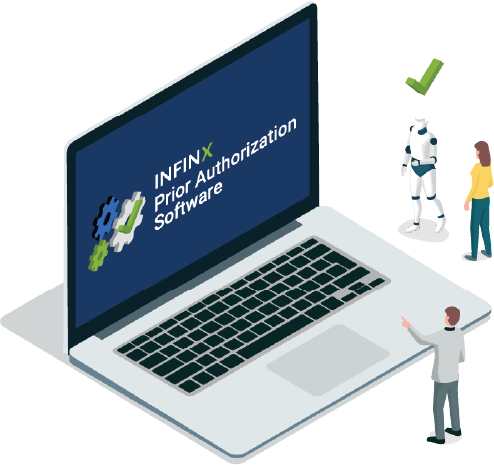
In Summary
As reliance on the field of sleep medicine continues to grow, differentiating your practice from others by offering pristine business support to referring providers or self-referral patients helps secure future potential patient gr owth. Your referral provider base will benefit their patients with more timely care initiation and less cumbersome reimbursement.
While healthcare associations and government entities continue to discuss streamlining PAs, it seems clear that the process itself will remain in place as a way for insurance payers to control care. Meeting the challenge seems a more prudent and proactive response instead of waiting for change to occur.
Contact Infinx to learn more about the efficiencies gained through automated prior authorizations for sleep medicine.
Thanks for reading. If you’d like to see the footnotes, please download this white paper as a pdf here.
About Infinx
Infinx provides innovative and scalable payment lifecycle solutions for healthcare practices. Combining an intelligent, cloud-based platform driven by artificial intelligence and automation, with our trained and certified prior authorization, coding and billing specialists, we help clients realize revenue, enabling them to shift focus from administrative details to billable patient care.
